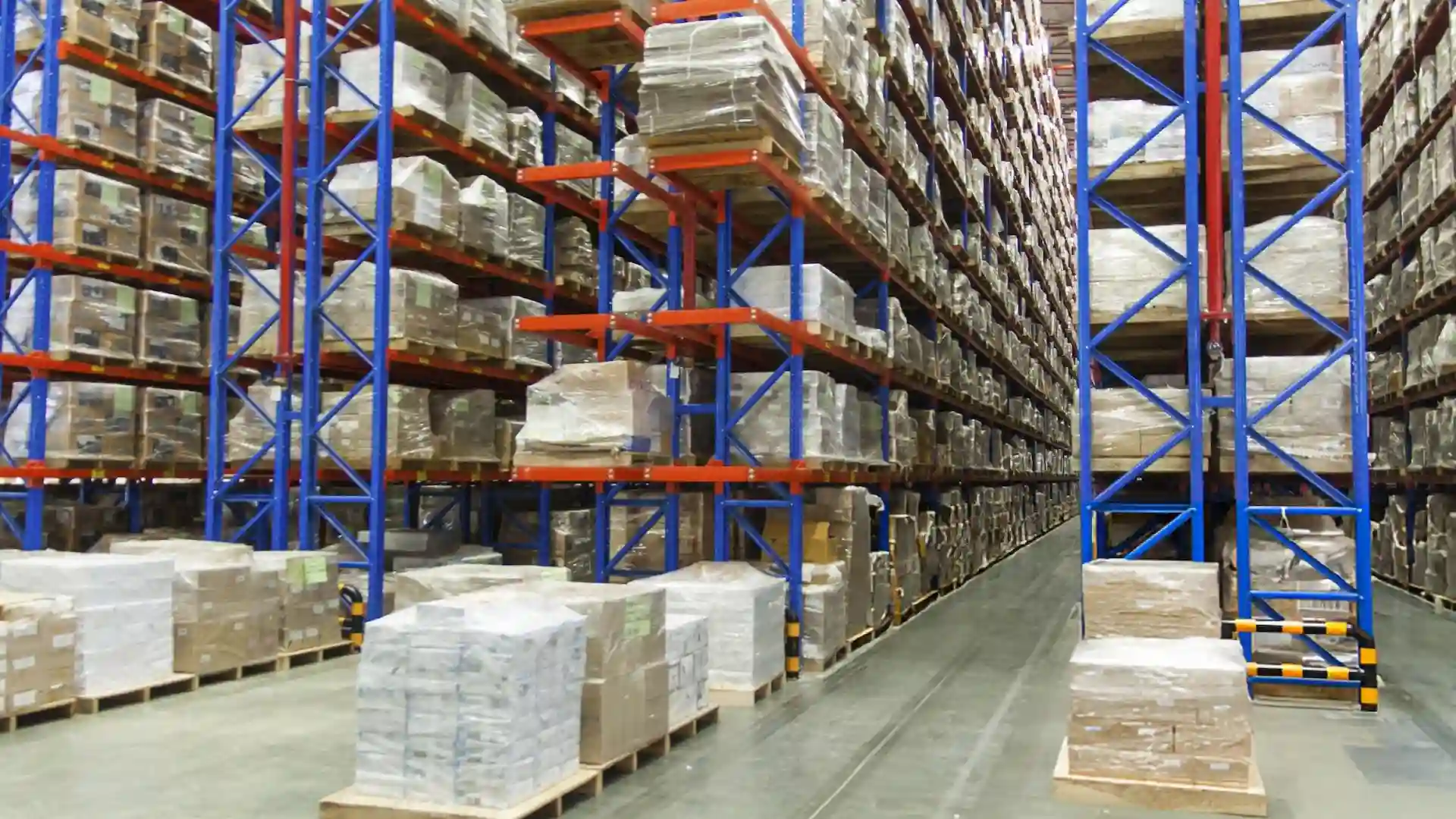Going Global: Strategies for Successfully Expanding Your E-Commerce Business into International Markets

Expanding your e-commerce business into international markets is an exciting growth opportunity that offers the chance to tap into new customer bases, increase brand awareness, and boost revenue. However, going global involves much more than simply translating your website. It requires a carefully planned strategy that considers cultural adaptation, market research, and compliance with foreign regulations. In this guide, we'll explore key strategies for successfully expanding your e-commerce business internationally, covering every aspect from shipping solutions to localization.
Why Global Expansion is Crucial for E-Commerce Growth
Global expansion is no longer just an option; it’s becoming essential for e-commerce businesses looking to scale and stay competitive. As online shopping continues to grow worldwide, entering international markets can provide your business with access to a wider audience, increased sales potential, and a chance to establish a stronger brand presence. However, expanding globally requires overcoming logistical, financial, and cultural challenges to ensure a smooth transition.
Understanding Your Target Audience through Market Research
Conduct Comprehensive Market Research
Before diving into international markets, it's crucial to conduct market research to understand where your products are in demand and which regions show the most growth potential. Begin by analyzing market trends, competitor presence, and local preferences in your target countries. Market research helps you:
- Identify demand for your products in different markets
- Assess local competition and understand pricing strategies
- Gauge consumer behavior and preferences
For successful global expansion, your research should also include understanding economic factors, such as currency stability and purchasing power, which can influence your pricing strategy.
Understand the Target Audience
The preferences and purchasing habits of your target audience can vary widely across different regions. Cultural adaptation is key here: your products and marketing approach should resonate with local consumers. For example, while online discounts may be popular in one country, quality assurance and brand reputation might be more valued in another. Adjusting your approach based on audience needs will enhance customer engagement and lead to a more successful market entry.
Preparing Your E-Commerce Platform for Global Markets
Optimize Your Website for International Users
When expanding internationally, optimizing your website for global audiences is essential for a seamless user experience. Consider the following:
- Language Translation: Translate your site content into the local language to make it more accessible.
- Currency Conversion: Implement dynamic currency conversion to provide accurate pricing in the user's local currency.
- Website Load Times: Ensure your website loads quickly in various regions by using Content Delivery Networks (CDNs) to enhance performance.
These adjustments improve user experience and encourage higher engagement from international customers.
Invest in Localization and Cultural Adaptation
Localization goes beyond translation; it involves adapting your entire user experience to fit the local culture. Consider using local colors, visuals, and messaging that resonate with your target market. Cultural adaptation helps to build trust and enhances customer acquisition by making your website feel familiar and accessible to foreign customers.
Logistics and Fulfillment: Key Components of Global Expansion
Evaluate Shipping Solutions and International Logistics
Reliable international logistics and shipping solutions are critical for global e-commerce success. Look for carriers with proven expertise in cross-border trade and ensure your shipping options are transparent for customers. Offering multiple shipping speeds, from standard to express, allows your customers to choose the option that best fits their needs. For efficient inventory management, consider partnering with a fulfillment center in the target country to minimize delivery times and reduce shipping costs.
Manage Inventory and Fulfillment Strategies
Inventory management becomes more complex with international expansion. A strategic approach can help streamline operations and reduce overhead:
- Localized Warehousing: Storing products closer to your target market reduces shipping time and enhances customer satisfaction.
- Demand Forecasting: Use data analytics to forecast demand in specific markets, helping avoid overstocking or stockouts.
- Returns Management: Set up clear return policies for international customers, making it easy for them to return items without high costs.
By addressing these logistics challenges, you can provide a more reliable and satisfactory shopping experience for international customers.
Navigating Regulatory Compliance and Tax Implications
Understand Compliance Issues and Regulatory Requirements
Every country has its own regulations and standards for e-commerce businesses. Ensuring compliance with local laws and regulations is essential to avoid fines and maintain a reputable brand image. Key areas to focus on include:
- Data Protection: Ensure that you comply with local data privacy regulations like the GDPR in Europe.
- Product Standards and Labeling: Some regions have specific requirements for labeling and product information.
- Tax Implications: Different countries impose various import duties and taxes, affecting your pricing and profitability.
By proactively addressing compliance issues, you protect your business and create a trustworthy reputation in new markets.
Address Tax Implications for International Sales
Global expansion introduces new tax obligations, including value-added tax (VAT) and import duties. Research the tax requirements in your target markets to avoid unexpected fees. Many e-commerce businesses work with tax professionals to understand and manage these complexities, ensuring compliance with foreign tax policies while preserving profitability.
Payment Gateways and Currency Considerations
Choose the Right Payment Gateways
Offering a range of secure and convenient payment gateways is essential for successful international expansion. Ensure your payment processing system supports local payment methods popular in the region, as not all customers use global credit cards or digital wallets. Having multiple payment options will help reduce cart abandonment and boost customer trust.
Implement Currency Conversion Tools
For a seamless shopping experience, provide accurate currency conversions based on real-time exchange rates. Currency conversion tools simplify the checkout process, improving the overall user experience and building brand trust among international customers.
Building a Strong International Marketing and Social Media Presence
Develop a Localized Online Marketing Strategy
A well-planned digital marketing strategy is essential to reach and engage new international audiences. Use online marketing strategies that align with local consumer behaviors. Strategies include:
- Search Engine Optimization (SEO): Optimize content and keywords for search engines specific to your target market, like Baidu in China or Yandex in Russia.
- Social Media Presence: Create social media profiles for each market and tailor content to local trends and languages.
- Influencer Partnerships: Partner with local influencers to improve brand awareness and build credibility with new audiences.
These strategies ensure that your brand resonates with potential customers and drives engagement.
Run Targeted Advertising Campaigns
International advertising strategies require a focus on localization and audience segmentation. Use data analytics to understand where your audience spends time online and tailor ads to those platforms. Social media, pay-per-click (PPC), and retargeting campaigns allow you to increase visibility, drive traffic, and acquire customers in new regions.
Enhancing Customer Experience and Support
Invest in Multilingual Customer Service
Customer service is a critical component of a successful global expansion strategy. Hiring multilingual support representatives or using AI-powered chatbots that support multiple languages can help you provide prompt and effective assistance to international customers. Effective customer service strengthens customer loyalty and helps build a positive brand reputation in new markets.
Develop Flexible Return Policies
Return policies can significantly influence purchase decisions. Ensure your return policy accommodates international customers, including affordable return shipping options. A user-friendly return policy can boost customer confidence and improve conversion rates, making your brand more appealing to international buyers.
Scaling Your E-Commerce Business in International Markets
Use Data Analytics to Inform Strategic Planning
Data analytics is a valuable tool for continuously improving your global expansion strategy. Regularly analyze customer behavior, sales data, and market trends to optimize operations, refine marketing strategies, and improve customer engagement. Data-driven decision-making allows you to be agile and adapt to changes in foreign markets.
Optimize Pricing Strategy for Market Penetration
Your pricing strategy should consider the local economic environment, competitive landscape, and purchasing power of your target audience. Offering competitive prices without compromising on profit margin is essential for successful market penetration. Regularly review and adjust prices as needed to remain attractive and relevant in different markets.
Consider Strategic Partnerships and Product Sourcing
Establishing local partnerships can simplify your entry into foreign markets by leveraging established networks. Partnerships with local distributors, influencers, or logistics providers can accelerate market entry and improve brand visibility. Additionally, sourcing products locally can help reduce logistics costs and enhance supply chain resilience.
Conclusion
Expanding your e-commerce business into international markets can be challenging, but with a well-rounded strategy focused on market research, localization, logistics, compliance, and customer engagement, it’s possible to successfully tap into new markets and build a global brand. By focusing on cultural adaptation, optimizing your e-commerce platform, and using data-driven insights, you can achieve sustainable growth in diverse international markets. Remember, each market is unique—continuously monitor trends, adapt your approach, and stay flexible to navigate the ever-evolving global e-commerce landscape.
FAQ: Expanding Your E-Commerce Business into International Markets
What are the key steps for successfully expanding an e-commerce business globally?
To expand your e-commerce business internationally, start by conducting thorough market research to understand target regions and demand. Next, localize your website and marketing to suit the cultural preferences of each market. Ensure reliable logistics and shipping solutions, and comply with local regulations, including taxes and data protection laws. Finally, establish a local customer support system to engage with and retain your new customers.
How can I adapt my e-commerce website for different international markets?
Adapting your website for global markets involves language translation, currency conversion, and localized content that resonates with the target audience. Ensure your site offers region-specific payment gateways, complies with local regulations, and has fast load times through a Content Delivery Network (CDN). Consider using culturally relevant images and messages to enhance user experience and build trust with international customers.
What are the most effective marketing strategies for reaching international e-commerce customers?
Successful marketing strategies for international markets include localized SEO, targeted social media campaigns, and working with local influencers. SEO should be tailored to each region, focusing on keywords that resonate locally. Additionally, targeted ads and partnerships with influencers can help increase brand awareness and customer engagement in specific markets.
What are the main challenges of international e-commerce expansion?
The primary challenges of international expansion include regulatory compliance, logistics, and cultural adaptation. You must navigate tax and import/export laws, ensure reliable shipping solutions, and handle potential delays in customs. Cultural differences in shopping habits and preferences also require careful adaptation to make products and marketing appealing to each specific audience.
How can I handle customer service and returns for international e-commerce?
Providing multilingual customer support and a flexible return policy is essential for international e-commerce. Offering live chat or chatbot support in multiple languages ensures prompt assistance for global customers. For returns, consider partnering with local logistics providers to streamline the process, reduce costs, and improve customer satisfaction, which is key to maintaining trust and loyalty across borders.

.svg)
.svg)
.svg)




